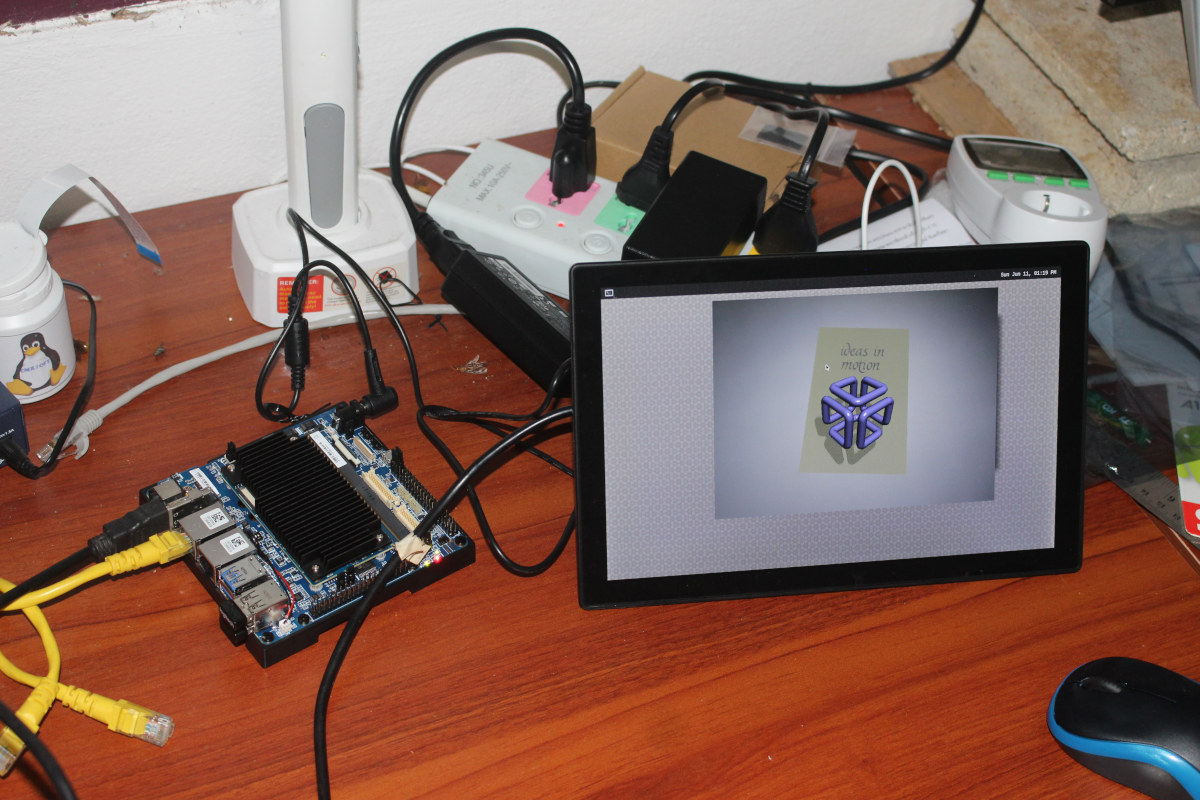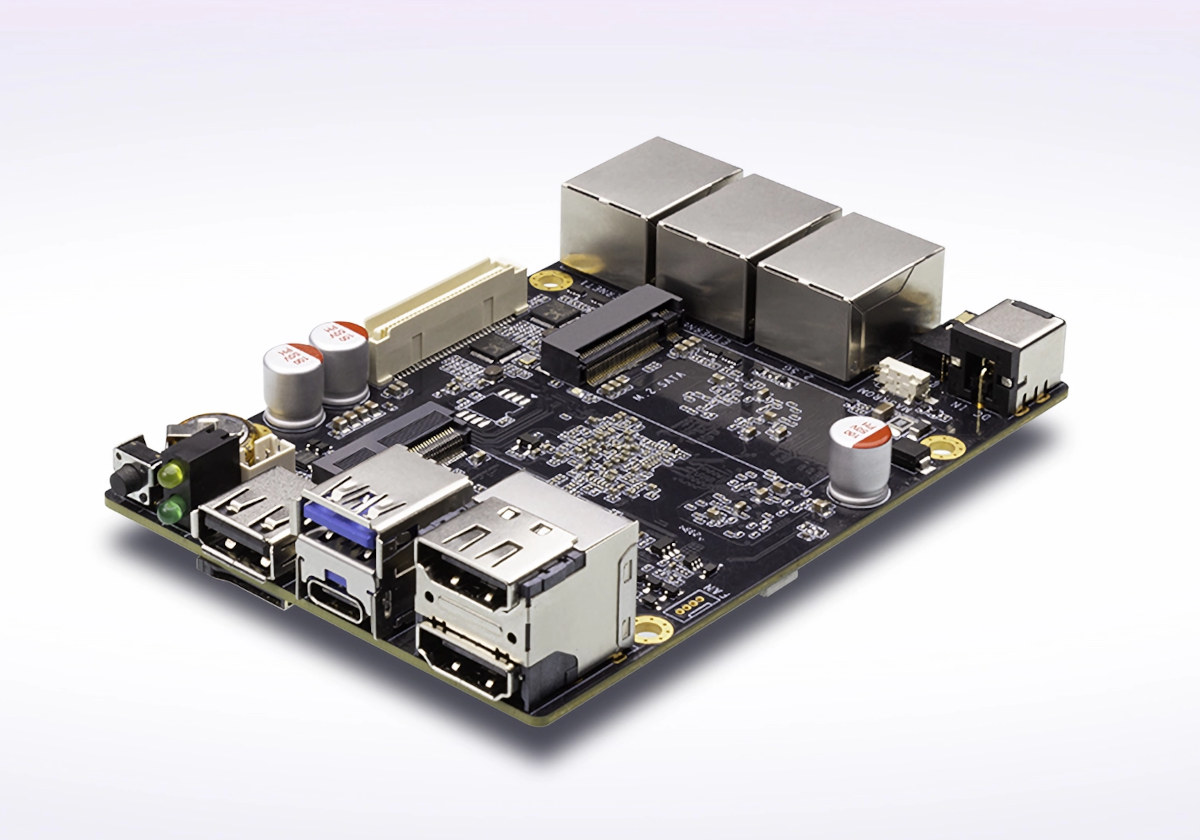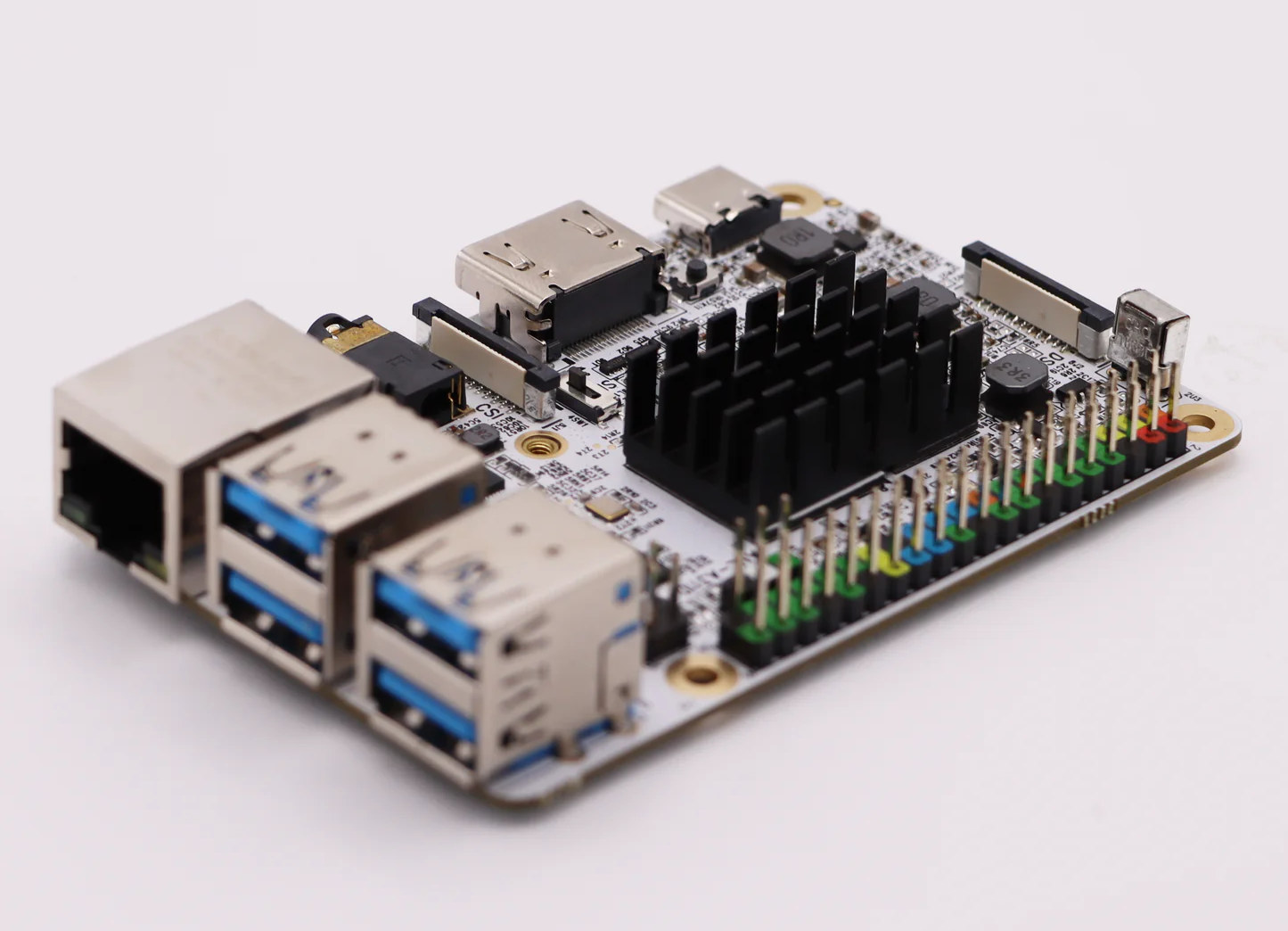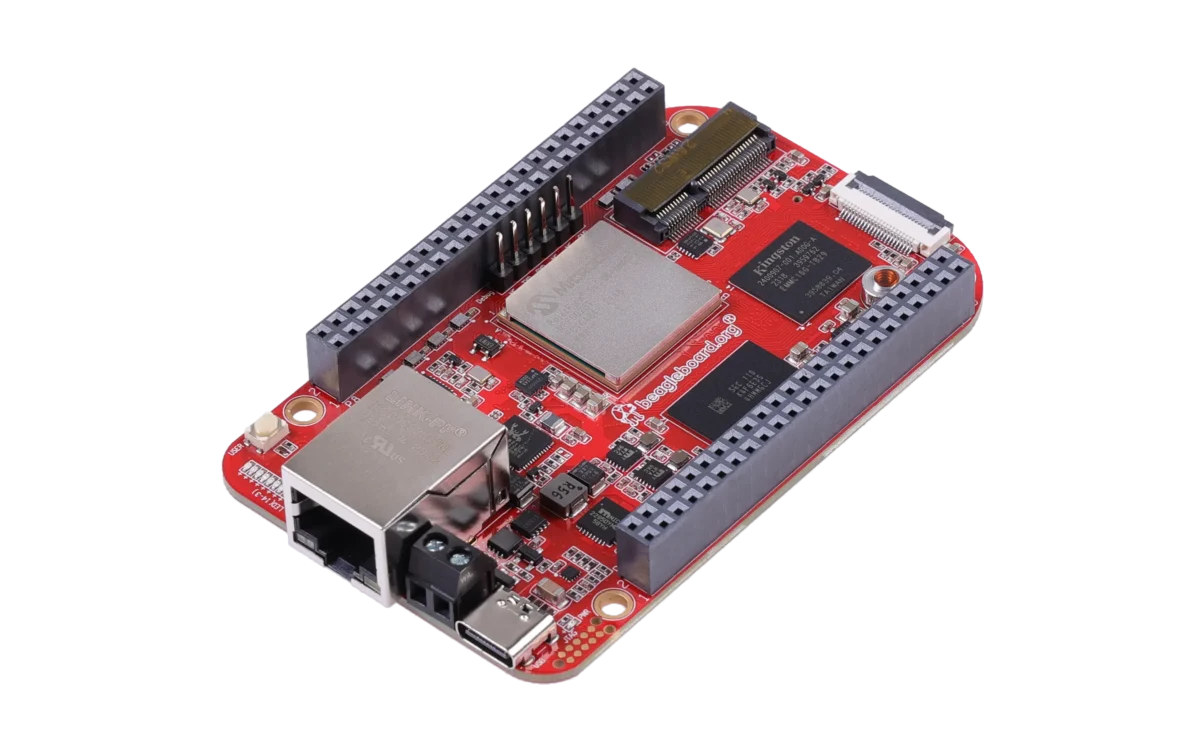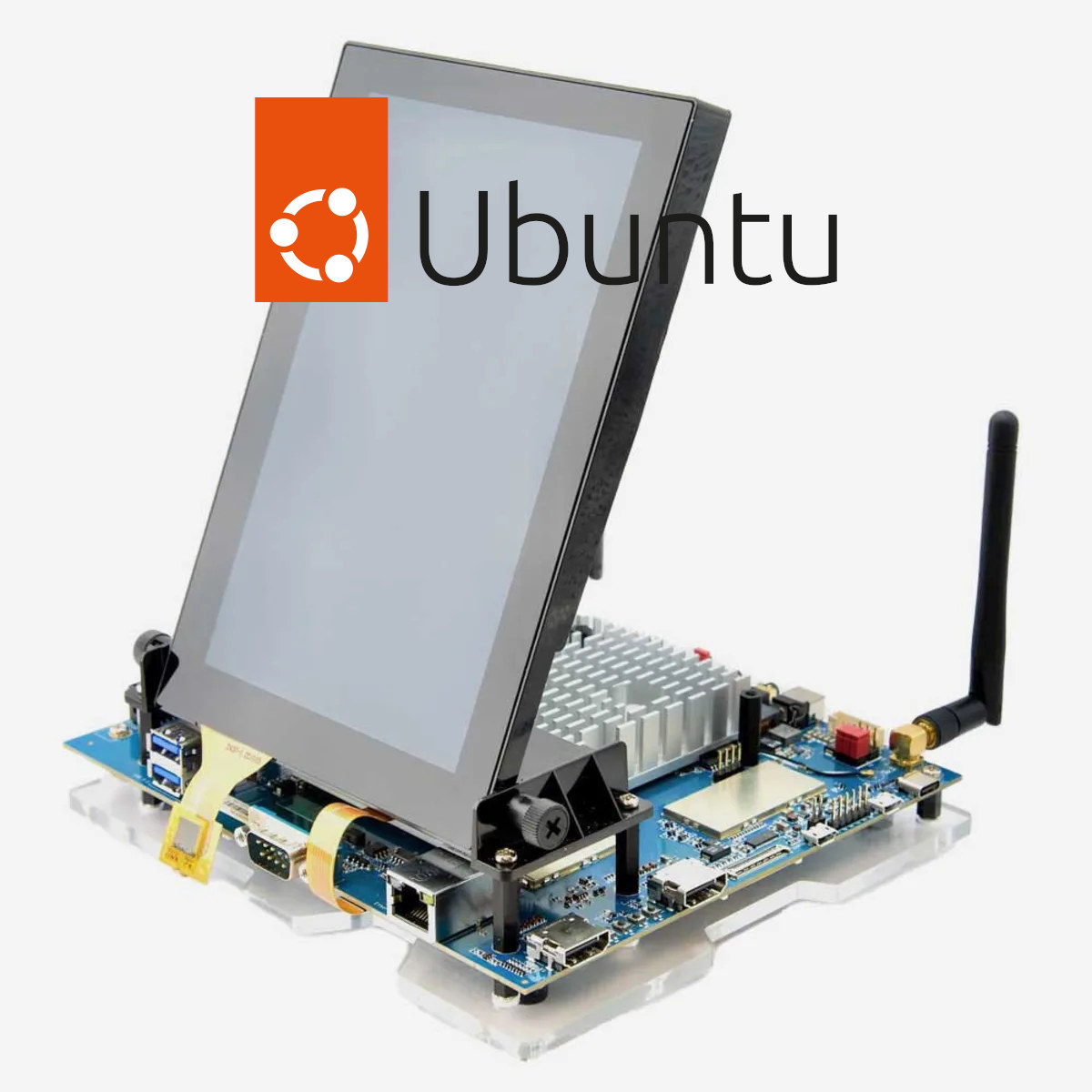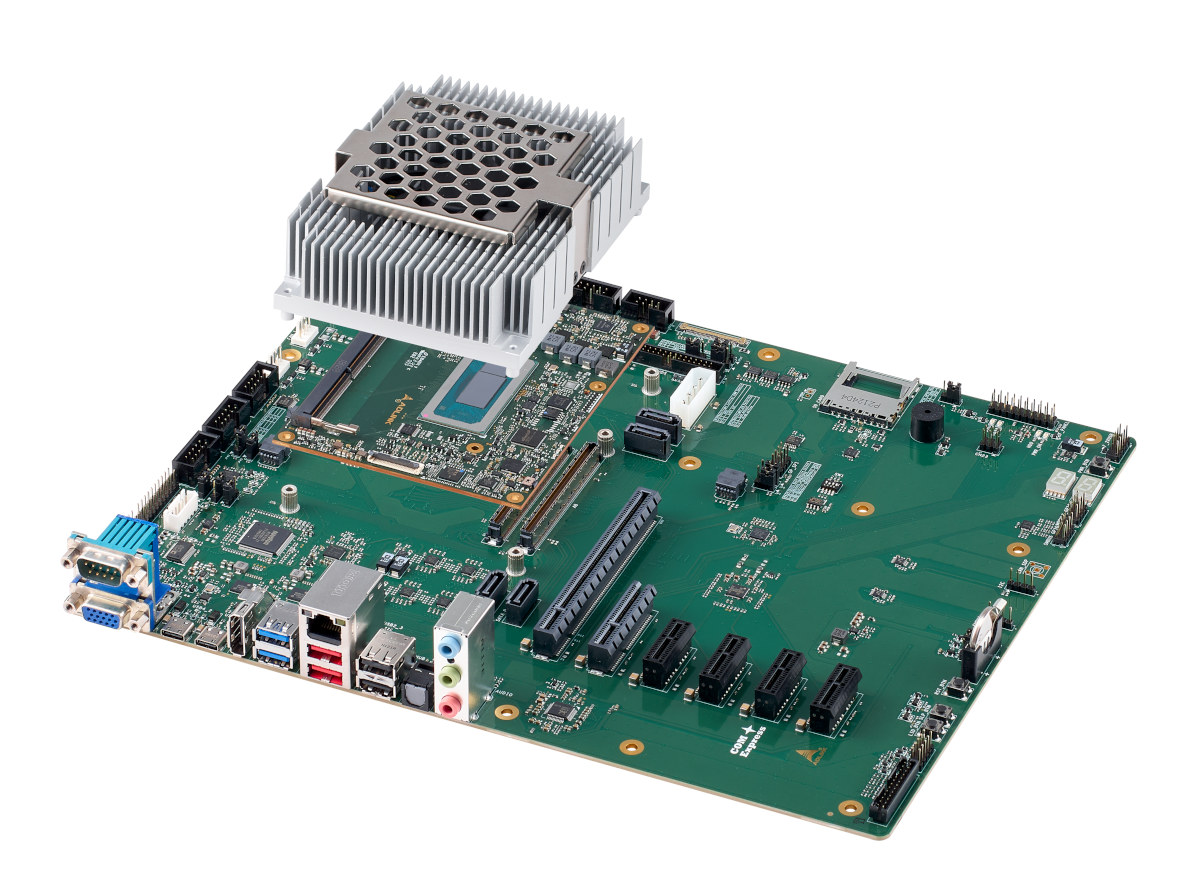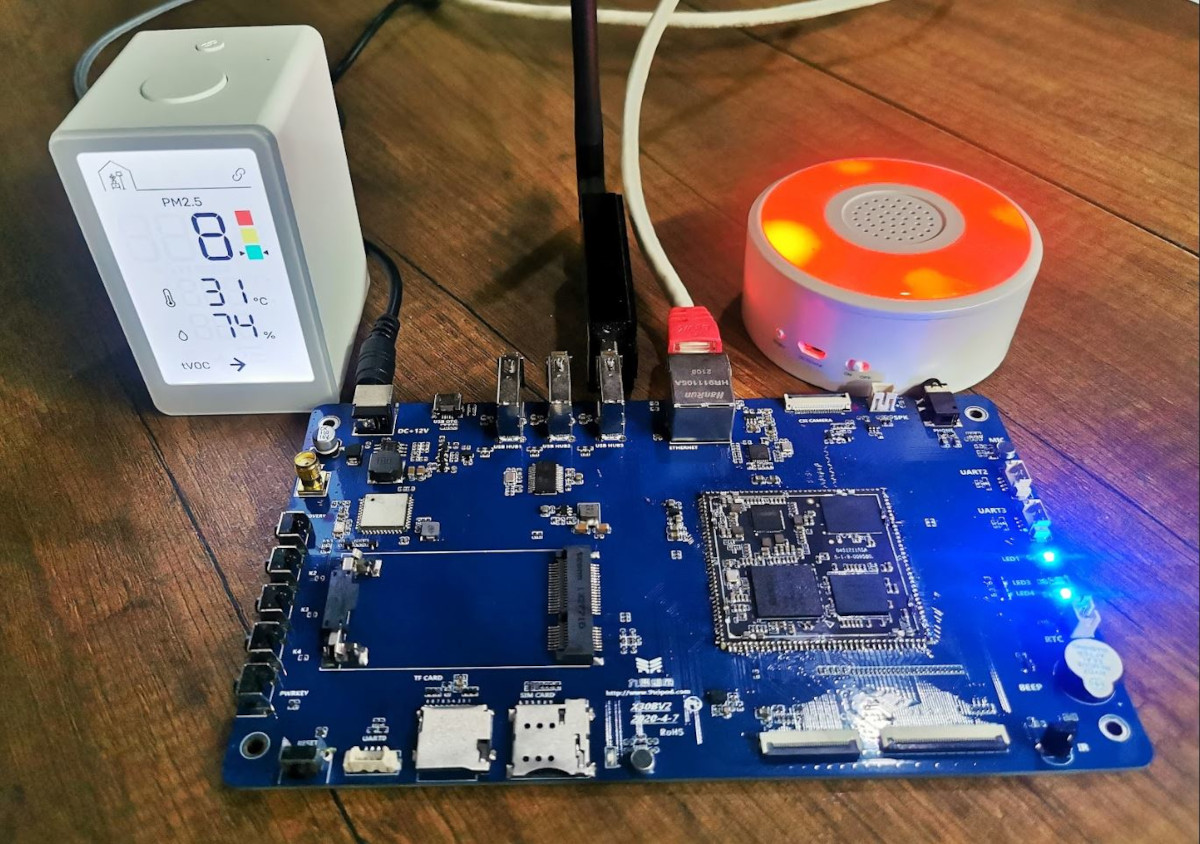We’ll end this year’s Giveaway Week with a pretty powerful development kit – ADLINK i-Pi SMARC 1200 – powered by a MediaTek Genio 1200 octa-core processor with four Cortex-A78 cores @ up to 2.2 GHz, four Cortex-A55 cores, an Arm Mali Mali-G57 MC5 GPU, 4K hardware video decoding and decoding support, and a 4.8 TOPS NPU. The mainboard is comprised of a SMARC 2.1-compliant system-on-module with 4GB LPDDR4 memory and 64GB UFS storage and fitted with a heatsink for cooling as well as a carrier board with a 4Kp60 capable HDMI 2.0 port, two Gigabit Ethernet ports, two USB 3.0 ports, two USB 2.0 ports, a 3.5mm audio jack, two 40-pin headers for I/Os including one compatible with the 40-pin Raspberry Pi GPIO header, plus LVDS connectors, MIPI CSI camera connectors, and M.2 expansion slots for storage and/or wireless expansion. I tested the MediaTek Genio 1200 devkit with a Yocto […]
Ubuntu Touch 20.04 OTA-3 release adds support for PinePhone and PineTab devices
UBPorts has just released Ubuntu Touch 20.04 OTA-3 based on Ubuntu 20.04 LTS with the latest security updates and beta support for PinePhone, PinePhone Pro, PineTab, and PineTab 2, adding to the smartphones already supported by Ubuntu Touch 20.04 OTA-2. As a reminder, Ubuntu Touch was initially handled by Canonical for desktop/mobile convergence, but it was dropped when the company decided to refocus its efforts on cloud and IoT, and the UBPorts community took over and eventually outed the first stable Ubuntu Touch release in June 2017. The developers kept on improving the OS since then with new releases from time to time, but note that it should still be considered experimental only for most devices, and will not be suitable as a daily driver for the majority of people. The PinePhone and PineTab have been supported by Ubuntu Touch for a few years, but they had their own branch […]
Firefly ROC-RK3588-RT Rockchip RK3588(J) SBC comes with three 2.5Gbps/gigabit Ethernet ports
Firefly ROC-RK3588-RT is a Rockchip RK3588(J) SBC suitable for networking applications such as routers and firewalls thanks to one 2.5GbE port and two gigabit Ethernet ports and available in both commercial and industrial temperature grades. But the board is likely to be used for more complex workloads since it also comes with three video output interfaces (2x HDMI and USB-C DisplayPort), M.2 sockets for a SATA or NVMe SSD, a WiFi 6/Bluetooth 5.2 module, a 6 TOPS NPU embedded in the Rockchip processor, and a (non-standard) expansion connector with PCIe Gen 3 and other interfaces. Firefly ROC-RK3588-RT specifications: SoC (one or the other) Rockchip RK3588 octa-core processor with CPU – 4x Cortex‑A76 cores @ up to 2.4 GHz, 4x Cortex‑A55 core @ 1.8 GHz GPU – Arm Mali-G610 MP4 “Odin” GPU @ 1.0 GHz Video decoder – 8Kp60 H.265, VP9, AVS2, 8Kp30 H.264 AVC/MVC, 4Kp60 AV1, 1080p60 MPEG-2/-1, VC-1, VP8 […]
Libre Computer AML-A311D-CC “Alta” SBC features Amlogic A311D AI processor
Libre Computer has launched the credit card-sized “Alta” SBC, also known as AML-A311D-CC, designed for AI applications with the Amlogic A311D hexa-core Arm Cortex-A73/A53 processor equipped with a 5 TOPS AI accelerator. The board comes with 4GB LPDDR4, a 16MB SPI flash for the bootloader as well as a microSD card slot and eMMC flash module connector for storage, and offers many of the same ports as found on the Raspberry Pi 3 Model B+ with Gigabit Ethernet, four USB 3.0 ports, HDMI output, an AV jack, MIPI CSI and DSI connector, and a 40-pin GPIO header that should work with most Raspberry Pi HATs. AML-A311D-CC “Alta” specifications: SoC – Amlogic A311D CPU Hexa-core processor with 4x Arm Cortex-A73 cores @ up to 2.2 GHz and 2x Cortex A53 cores @ up to 1.8 GHz Built-in Cortex-M4 core for “always-on” processing GPU – Arm Mali-G52 MP4 GPU VPU 4K UHD […]
$150 BeagleV-Fire SBC features Microchip PolarFire RISC-V SoC FPGA, supports BeagleBone capes
BeagleV-Fire is a new single board computer powered by Microchip PolarFire MPFS025T penta-core RISC-V SoC FPGA that follows the BeagleBone Black form factor for compatibility with BeagleBone capes expansion boards. Microchip PolarFire RISC-V SoC FPGA was one of the first Linux-compatible RISC-V SoCs and was found in pricey boards such as the Icicle and TySOM-M-MPFS250 development boards. I also got an Icicle board for review, and while getting started with the Yocto Linux BSP was OK, I really struggled with the FPGA part including just installing Libero SoC in Ubuntu and going through the license, and even I gave up trying to run a bitstream sample on the board due to a lack of time. The BeagleV-Fire makes it much cheaper to try out the PolarFire and hopefully makes it easier to get started with both Linux and the FPGA fabric through easier-to-understand documentation and code samples. BeagleFire-V specifications: SoC […]
MediaTek Genio 1200 Arm Cortex-A78/A55 EVK gets official Ubuntu 22.04 support
Canonical and MediaTek announced optimized Ubuntu images for the Genio 1200 EVK during Embedded Word 2023 last March, but at the time, I could not find any images for download, and there was just an invitation to come check out Ubuntu Core running on the MediaTek Genio platform at the event. But things have progressed well, and Canonical has now announced the availability of Ubuntu 22.04 Desktop and Server for not only the high-end Genio 1200 EVK, but also the mid-range Genio 700 EVK, and the entry-level Genio 350 EVK. That should be good news, as when I tested the i-Pi SMARC 1200 devkit earlier this year (June 2023), the Genio 1200 Arm Cortex-A78/A55 processor (aka MediaTek MT8195) showed really good performance in benchmarks, but at the time, the only option was to use a Yocto image, which is great, but there were still some unresolved software issues and the […]
COM Express development kit ships with Intel Core i3-13300HE or Core i5-13600HE Raptor Lake-P processor
ADLINK has launched an “IoT prototyping kit” based on the company’s Express-RLP COM Express Type 6 module with either an Intel Core i3-13300HE or Core i5-13600HE Raptor Lake-P processor. The module supports up to 64GB DDR5 and the ATX carrier board offers a wide range of interfaces such as 2.5GbE, two SATA ports, DisplayPort, LVDS (or EDP), and VGA video outputs, two USB4 ports, and more. COM Express Type 6 Raptor Lake-P devkit specifications: System-on-Module – ADLINK Express-RLP COM Express Type 6 computer-on-module Raptor Lake-P SoC Intel Core i5-13600HE 4P+8E cores/16 threads processor @ up to 2.7 GHz with 18MB cache, Intel Iris Xe graphics; TDP: 45W (cTDP: 35W) Intel Core i3-13300HE 4P+4E cores/12 threads processor @ up to 2.1 GHz with 12MB cache, Intel UHD graphics; TDP: 45W (cTDP: 35W) System Memory – Up to 64GB (2x 32GB) DDR5 via SO-DIMM sockets Dimensions – 125 x 95 mm (PICMG […]
DSOM-020R PX30 development board review – Unboxing, Benchmarks, and Zigbee gateway
Dusun IoT DSOM-020R PX30 is a development board based on the company’s 1.3GHz Rockchip PX30K quad-core Cortex-A35 module of the same name designed for industrial applications that emphasize reliability and power efficiency. The board comes with various ports and expansion capabilities with support for monitors, microphones, and sensors through its carrier board in order to create prototypes and develop software before integrating the SOM DSOM-020 PX30 system-on-module into your own custom carrier board and product. As the company stipulates on the website, the development board is suitable for AIoT equipment, vehicle control, gaming platforms, smart displays, medical equipment, vending machines, and industrial computers. Let’s start the review with an unboxing of the DSOM-020R PX30 development board to find out more. DSOM-020R PX30 development board unboxing Dusun IoT sent us a basic kit of the DSOM-020R PX30 development board for review with a carrier board, the DSOM-020 PX30 system-on-module module, a […]


